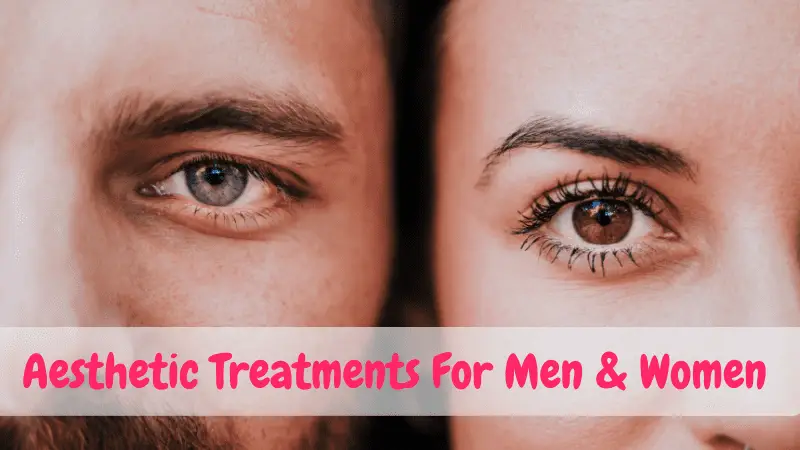Introduction
As we celebrate Father’s Day this month, it’s a perfect time to reflect on the unique ways in which men and women approach the world of aesthetics. Traditionally, cosmetic treatments have been more popular among women, with a strong focus on enhancing and maintaining a youthful appearance. However, times are changing, and an increasing number of men are now exploring the benefits of anti-ageing treatments.
This shift brings to light an important aspect of aesthetic medicine: the need to tailor treatments specifically to the unique characteristics of men and women. While the goals may be similar—looking and feeling their best—the paths to achieving these goals often differ. Understanding the distinct facial features and preferences between men and women is crucial for delivering natural and satisfying results. In this article, we’ll explore these differences and how they influence the approach to cosmetic treatments.
Historical Context
The field of cosmetic treatments has evolved significantly over the past few decades, and with it, the attitudes and approaches towards aesthetic enhancement. Historically, the pursuit of beauty has been predominantly associated with women. From ancient times to the early 20th century, beauty rituals and treatments were largely marketed and tailored to women, who were encouraged to maintain a youthful and attractive appearance.
Men, on the other hand, were traditionally less engaged in aesthetic practices, with societal norms favouring a more rugged and natural appearance. The notion of men actively seeking cosmetic treatments was rare and often stigmatized. However, as society’s perception of masculinity and self-care has evolved, so too has the acceptance of men taking an interest in their appearance.
The late 20th century marked a turning point, with the rise of metrosexuality and the broader acceptance of men’s grooming products. This period saw an increase in men seeking treatments such as hair removal, skincare regimens, and eventually, anti-ageing solutions. In the 21st century, the trend has continued to grow, with a significant rise in the number of men opting for cosmetic procedures such as Botox, dermal fillers, and other non-surgical treatments.
Today, the cosmetic industry recognizes the distinct needs and desires of male clients, leading to the development of treatments and approaches specifically designed to cater to men. This evolution reflects a broader cultural shift towards equality in self-care, where both men and women feel empowered to take control of their appearance and age gracefully, on their own terms.
The Importance of Tailored Treatments
When it comes to cosmetic procedures, one size certainly does not fit all. The anatomical differences between men and women—ranging from bone structure and skin thickness to facial fat distribution—necessitate a tailored approach to achieve the best results. Understanding and respecting these differences is crucial for delivering natural-looking and effective outcomes.
For men, the goal often centres around enhancing or maintaining a strong, masculine appearance. This might involve accentuating features like the jawline or brow ridge while keeping facial contours angular and defined. Men’s skin, being generally thicker and more resilient, also responds differently to treatments, requiring adjustments in technique and product choice.
Women, on the other hand, typically seek to enhance softer, more delicate features. Treatments might focus on adding volume to the cheeks, refining the jawline, or smoothing fine lines to maintain a youthful, feminine appearance. The thinner nature of women’s skin, coupled with different patterns of facial ageing, calls for a more nuanced approach to ensure subtle, yet noticeable, improvements.
Tailoring treatments also involves understanding the aesthetic preferences of each individual. While some men may prefer a very subtle enhancement, women might opt for more pronounced changes. The approach to administering treatments like Botox or dermal fillers must be adjusted accordingly, not just in terms of dosage but also in technique.
Ultimately, the key to successful cosmetic treatments lies in personalization. By considering the unique facial anatomy and aesthetic goals of each patient, practitioners can ensure that both men and women achieve results that not only enhance their natural beauty but also reflect their personal style and identity. This tailored approach leads to higher patient satisfaction and more harmonious, natural-looking results.
Key Facial Differences Between Men and Women
Understanding the key facial differences between men and women is essential in the field of cosmetic treatments. These differences are not only shaped by biology and hormones but also play a significant role in defining masculine and feminine aesthetics. Here are some of the most important distinctions:
Bone Structure:
Men typically have more pronounced bone structures, which contribute to a stronger, more angular appearance. This includes a more prominent brow ridge, a wider and squarer jawline, and more defined cheekbones. Women, on the other hand, generally possess softer, more rounded facial features. Their jawlines tend to be narrower and more tapered, and their brow ridges are less pronounced, giving a smoother, more delicate facial contour.
Facial Fat Distribution:
Women generally have a higher percentage of facial fat, which creates fuller cheeks and a softer overall appearance. This distribution of fat contributes to the youthful roundness that is often associated with feminine beauty. Men, conversely, have less facial fat, which results in a more chiseled, defined look. This lack of facial fat in men accentuates their bone structure, giving them a more rugged, masculine appearance.
Skin Thickness:
Men’s skin is generally thicker than women’s, which affects both the appearance of ageing and the way the skin responds to treatments. Thicker skin in men tends to show fewer fine lines and wrinkles but may be more prone to deeper creases and more resilient to certain treatments. Women’s skin, being thinner, often displays signs of ageing earlier, with fine lines and wrinkles becoming apparent sooner. This difference in skin thickness requires a tailored approach when selecting and applying cosmetic treatments.
Facial Hair:
One of the most obvious differences between male and female faces is the presence of facial hair in men. Facial hair can play a role in concealing certain skin imperfections, such as scars or blemishes, and can also influence the approach to treatments like laser hair removal or skin resurfacing. Women, who typically have minimal facial hair, may focus more on treatments that enhance skin smoothness and radiance.
Nose and Lip Shape:
Men often have larger and more prominent noses compared to women, with a more defined bridge and a straighter profile. In contrast, women generally have smaller, more refined noses, often with a gentle curve. Lips also differ, with women usually having fuller, more voluminous lips, which are often enhanced further through cosmetic treatments. Men’s lips tend to be thinner and less prominent, aligning with the overall masculine aesthetic.
Recognising these key facial differences allows cosmetic practitioners to tailor treatments effectively, ensuring that enhancements are in harmony with the patient’s natural features and desired outcomes. Whether the goal is to enhance masculinity or femininity, understanding these distinctions is the foundation of achieving optimal, natural-looking results.

Aesthetic Preferences and Treatment Focus
Aesthetic preferences and treatment focus vary significantly between men and women, driven by both biological factors and societal influences. Understanding these differences is crucial for tailoring cosmetic treatments to meet the unique needs and goals of each individual.
Men’s Aesthetic Preferences: Men generally seek to maintain or enhance a strong, rugged appearance. Their aesthetic goals often revolve around accentuating masculine features, such as a well-defined jawline, pronounced cheekbones, and a strong brow ridge. Common treatment focuses for men include:
- Jawline Enhancement: Men often desire a more chiseled jawline, which can be achieved through the use of dermal fillers or other contouring techniques.
- Cheekbone Definition: Enhancing the cheekbones to create a more angular, masculine appearance is another common goal.
- Forehead and Brow Area: Smoothing out deep forehead lines while maintaining a strong brow ridge is often a priority for men seeking a youthful yet masculine look.
- Minimal Intervention: Many men prefer subtle, natural-looking results that enhance their appearance without making it obvious they’ve had cosmetic work done.
Women’s Aesthetic Preferences: Women’s aesthetic goals often focus on enhancing softness, youthfulness, and femininity. Their treatment preferences frequently include:
- Lip Augmentation: Fuller, more voluminous lips are a common desire among women, often achieved with hyaluronic acid fillers to create a plump and youthful appearance.
- Cheek Volume Restoration: Women often seek to restore or enhance cheek volume to achieve a more youthful and rounded facial contour.
- Smoothing Fine Lines and Wrinkles: Women are more likely to focus on smoothing fine lines around the eyes, mouth, and forehead to maintain a youthful, smooth complexion.
- Facial Harmony and Balance: Women often aim for a balanced, symmetrical look, enhancing features such as the nose, chin, and lips to achieve overall facial harmony.
Treatment Focus Differences: Given these aesthetic preferences, the approach to treatment differs between men and women. For men, treatments often aim to enhance structure and definition while preserving a natural, understated look. Techniques that build volume in a controlled, subtle way are preferred to maintain a rugged and masculine appearance.
For women, treatments are often more focused on volume enhancement and softening of features. The goal is typically to create a youthful, radiant appearance with fuller lips, smoother skin, and well-defined yet soft facial contours.
Understanding these differing preferences ensures that cosmetic treatments are not only effective but also aligned with each individual’s aesthetic goals, resulting in outcomes that feel authentic and satisfying. Whether the aim is to enhance masculinity or femininity, the key to success lies in a personalised approach that respects these nuanced differences.

Conclusion
In the world of cosmetic treatments, the recognition of the fundamental differences between male and female facial anatomy, skin characteristics, and aesthetic preferences is crucial. These distinctions guide the approach to treatments, ensuring that each individual receives personalised care that aligns with their unique goals.
As more men embrace cosmetic enhancements, the importance of tailored treatments becomes even more pronounced. By understanding the specific needs and desires of both men and women, practitioners can deliver results that not only enhance appearance but also boost confidence and self-esteem.
Ultimately, whether the aim is to highlight masculine features or to enhance feminine softness, the key to achieving natural and satisfying results lies in a nuanced, individualised approach. As the field of cosmetics continues to evolve, this focus on personalised care will remain at the heart of successful aesthetic outcomes, allowing everyone to feel their best, regardless of gender.




